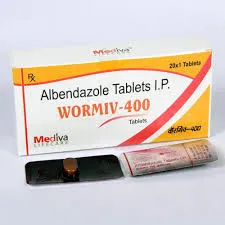- Afrikaans
- Albanian
- Amharic
- Arabic
- Armenian
- Azerbaijani
- Basque
- Belarusian
- Bengali
- Bosnian
- Bulgarian
- Catalan
- Cebuano
- Corsican
- Croatian
- Czech
- Danish
- Dutch
- English
- Esperanto
- Estonian
- Finnish
- French
- Frisian
- Galician
- Georgian
- German
- Greek
- Gujarati
- Haitian Creole
- hausa
- hawaiian
- Hebrew
- Hindi
- Miao
- Hungarian
- Icelandic
- igbo
- Indonesian
- irish
- Italian
- Japanese
- Javanese
- Kannada
- kazakh
- Khmer
- Rwandese
- Korean
- Kurdish
- Kyrgyz
- Lao
- Latin
- Latvian
- Lithuanian
- Luxembourgish
- Macedonian
- Malgashi
- Malay
- Malayalam
- Maltese
- Maori
- Marathi
- Mongolian
- Myanmar
- Nepali
- Norwegian
- Norwegian
- Occitan
- Pashto
- Persian
- Polish
- Portuguese
- Punjabi
- Romanian
- Russian
- Samoan
- Scottish Gaelic
- Serbian
- Sesotho
- Shona
- Sindhi
- Sinhala
- Slovak
- Slovenian
- Somali
- Spanish
- Sundanese
- Swahili
- Swedish
- Tagalog
- Tajik
- Tamil
- Tatar
- Telugu
- Thai
- Turkish
- Turkmen
- Ukrainian
- Urdu
- Uighur
- Uzbek
- Vietnamese
- Welsh
- Bantu
- Yiddish
- Yoruba
- Zulu
Дек . 16, 2024 18:46 Back to list
enrofloxacin dosage in cattle
Enrofloxacin Dosage in Cattle An Overview
Enrofloxacin, a fluoroquinolone antibiotic, is widely used in veterinary medicine to treat bacterial infections in cattle and various livestock. Its broad-spectrum activity against Gram-negative and some Gram-positive bacteria makes it valuable in the management of respiratory diseases, diarrhea, and other infections in bovines. However, the appropriate dosage of enrofloxacin is critical not only for ensuring the efficacy of the treatment but also for minimizing the risk of antimicrobial resistance and ensuring food safety.
Mechanism of Action
Enrofloxacin works by inhibiting bacterial DNA gyrase and topoisomerase IV, enzymes essential for DNA replication. This inhibition leads to the cessation of bacterial growth and replication, making it effective for both treating active infections and controlling bacterial populations in a herd. The drug's efficacy against a range of pathogens, including Escherichia coli, Mannheimia haemolytica, and Pasteurella multocida, highlights its importance in veterinary therapeutics.
Indications for Use
Common indications for enrofloxacin in cattle include bacterial pneumonia, metritis, and enteritis. For instance, conditions like bovine respiratory disease complex (BRDC), often caused by a combination of viral and bacterial pathogens, can be effectively managed with enrofloxacin. The drug is also utilized in treating urinary tract infections, foot rot, and skin infections in cattle.
Dosage Guidelines
The dosage of enrofloxacin for cattle can vary based on the specific condition being treated, the severity of the infection, and the age and weight of the animal. The commonly recommended dosage for cattle is approximately 2.5 mg to 7.5 mg per kilogram of body weight, administered once daily. It is crucial for veterinarians to assess the situation and adjust the dosage accordingly.
enrofloxacin dosage in cattle

Enrofloxacin can be administered via subcutaneous or intramuscular injection, and in some cases, oral formulations may be available. The duration of treatment typically ranges from 3 to 5 days, depending on the therapeutic response and the type of infection being treated.
Special Considerations
When using enrofloxacin, it is essential to consider the potential for developing antimicrobial resistance. Overuse or misuse of antibiotics can lead to resistant strains of bacteria, complicating treatment options in the future. Therefore, it is recommended that enrofloxacin be used judiciously, following veterinary guidance, and only when necessary.
Furthermore, withdrawal times must be observed to ensure food safety. Enrofloxacin has a specific withdrawal period that varies depending on the formulation used and the administration route. As a general guideline, a withdrawal period of at least 28 days is advised for cattle intended for slaughter when treated with enrofloxacin. This is crucial to prevent antibiotic residues from entering the food supply, which can pose health risks to consumers.
Adverse Effects
While enrofloxacin is generally well-tolerated in cattle, potential side effects may occur. These can include gastrointestinal disturbances such as diarrhea, and in rare cases, it may cause neurological effects, particularly in young animals due to the potential for cartilage damage. It is essential for producers and veterinarians to monitor treated animals for any adverse reactions and to report any unusual symptoms.
Conclusion
Enrofloxacin plays a significant role in the treatment of bacterial infections in cattle, offering a viable option for addressing various veterinary challenges. However, it is imperative that its use is guided by proper veterinary consultation, adherence to dosage recommendations, and consideration for withdrawal times. By implementing responsible use practices, the veterinary industry can ensure that enrofloxacin remains an effective tool in the treatment of bovine diseases while safeguarding animal health and food safety. As the landscape of veterinary medicine continues to evolve, ongoing research and education about antibiotic use in livestock will be essential in promoting the responsible use of enrofloxacin and other antibiotics in cattle.
-
Guide to Oxytetracycline Injection
NewsMar.27,2025
-
Guide to Colistin Sulphate
NewsMar.27,2025
-
Gentamicin Sulfate: Uses, Price, And Key Information
NewsMar.27,2025
-
Enrofloxacin Injection: Uses, Price, And Supplier Information
NewsMar.27,2025
-
Dexamethasone Sodium Phosphate Injection: Uses, Price, And Key Information
NewsMar.27,2025
-
Albendazole Tablet: Uses, Dosage, Cost, And Key Information
NewsMar.27,2025













